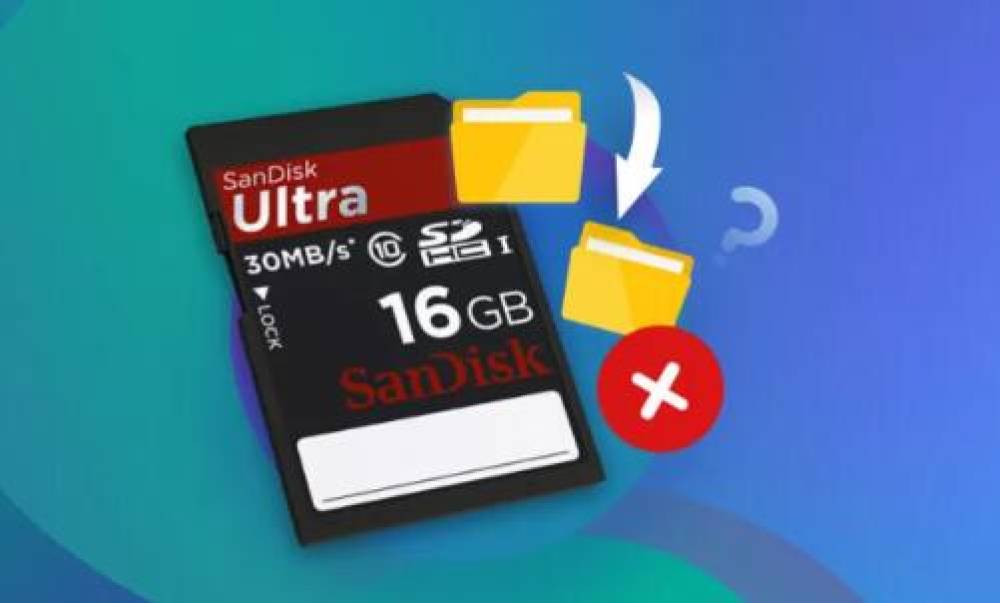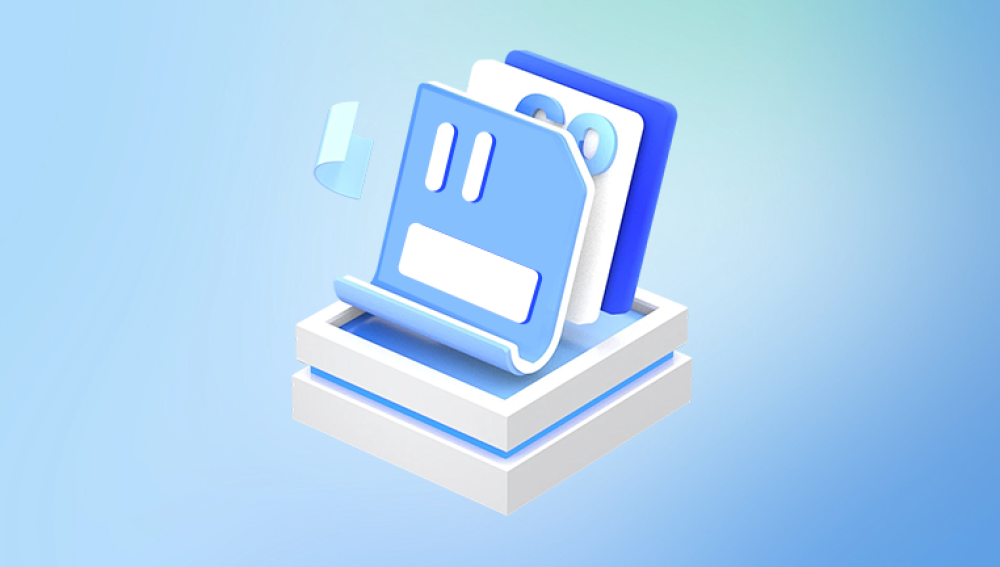Memory cards such as SD, microSD, CompactFlash (CF), and others are widely used in digital cameras, smartphones, tablets, drones, and many other devices. They store data in flash memory, a type of non-volatile memory that retains information even without power.
When you delete a photo from a memory card, the image isn’t immediately destroyed. Instead, the space it occupied is marked as "available" by the file system. The actual data remains intact on the card until it's overwritten by new files. This is why recovery is often possible especially if you stop using the card right after the loss occurs.
The same principle applies to formatting. A quick format typically erases the file directory, not the data itself, which means it’s still recoverable. A full format, on the other hand, may overwrite data and make recovery much harder.

Common Causes of Photo Loss from Memory Cards
To prevent data loss in the future and better understand recovery possibilities, it’s important to explore why photos go missing from memory cards. The most common reasons include:
Accidental Deletion
You may unintentionally delete one or more photos while browsing or managing files on a camera, smartphone, or computer.
Formatting the Card
Sometimes users format a memory card by mistake, especially when switching between devices or after receiving error prompts like “card not formatted.”
File System Corruption
Improper ejection, sudden power loss, or malware can corrupt the file system, making files unreadable or disappearing entirely.
Physical Damage
Exposure to water, bending, overheating, or snapping the card can result in physical failure, which may cause data loss or make the card unreadable.
Card Errors and Bad Sectors
Over time, flash memory wears out. Bad sectors may develop and render certain parts of the card inaccessible.
Virus or Malware
Malicious software may hide, delete, or corrupt your files on the memory card.
Unsupported File Systems
Incompatibility between devices and file systems can lead to improper formatting or accidental deletion.
Immediate Steps to Take After Photo Loss
If you discover that pictures are missing, act quickly and carefully to maximize your chances of recovery:
Stop Using the Card Immediately
Continued use increases the likelihood that deleted data will be overwritten. Don’t take new pictures or save new files to the card.
Eject Safely
Remove the memory card safely from your device and avoid using it until recovery attempts are complete.
Avoid Formatting
If prompted to format the card, cancel the process. Formatting can reduce your chances of successful recovery.
Prepare a Card Reader and Recovery Software
For best results, connect the memory card to your computer using a high-quality card reader. Then download reputable recovery software.
Software-Based Recovery: The Most Effective Method
The most practical and accessible way to retrieve pictures from a memory card is through data recovery software. These tools scan the card for deleted or hidden files and allow you to restore them.
Choosing the Right Recovery Software
Many recovery tools are available. When selecting one, look for:
File Format Support
Make sure it supports common image formats like JPEG, PNG, RAW, TIFF, and camera-specific formats such as CR2 (Canon), NEF (Nikon), or ARW (Sony).
User-Friendly Interface
An intuitive interface helps simplify the recovery process, even for beginners.
Preview Capability
The ability to preview recoverable images before restoring them is essential to ensure you recover the right files.
Compatibility
Ensure the software is compatible with your operating system (Windows, macOS, or Linux) and supports your memory card format (SDHC, microSD, etc.).
Safe to Use
The software should be read-only during the recovery process to prevent data overwrites.
Recommended Recovery Tools
Drecov Data Recovery
Getting started is easy. Simply connect your memory card to your computer using a card reader, then launch Drecov Data Recovery. The software will detect the card and give you the option to perform a quick or deep scan. Quick scans recover recently deleted files, while deep scans are ideal for formatted or corrupted cards.
After scanning, Panda will display a preview of all recoverable pictures. You can select the images you want and recover them with a single click. The software is designed to be safe and non-destructive—it doesn’t write anything to the memory card during the process, ensuring your data remains intact.
Panda’s clean, intuitive interface makes it accessible even for beginners, while still offering powerful features for advanced users. Just remember: stop using the card immediately after noticing photo loss to avoid overwriting data.
Step-by-Step Guide to Recovering Photos
Here’s how to use recovery software to retrieve pictures from your memory card:
Download and Install the Recovery Software
Install the software on your computer’s main drive, not the memory card. This prevents accidental overwrites.
Connect the Memory Card
Insert the memory card into a card reader and plug it into your computer.
Launch the Recovery Tool
Open the software and select your memory card as the storage device to scan.
Select Scan Type
Choose a quick scan for recently deleted files or a deep scan for thorough recovery, especially if the card was formatted or corrupted.
Scan the Card
Let the program scan the card for recoverable files. This may take minutes to hours depending on card size and scan depth.
Preview Files
Review the thumbnails or previews of the found images to confirm they’re the ones you need.
Select and Recover
Choose the pictures you want to recover, then save them to a different location (preferably not back on the card).
Verify Recovery
Open the recovered images to ensure they’re complete and viewable.
Recovering Photos After Formatting
If your memory card has been formatted, don’t panic. There’s still hope—especially if it was a quick format.
How to Recover from Formatted Cards
Use Deep Scan Mode
Most recovery tools have a deep scan or "raw recovery" mode that identifies file signatures and locates photos based on known data patterns.
Be Patient
Scanning a formatted card takes longer than a simple delete recovery, but results are often surprisingly good.
Save to a New Drive
As always, save the recovered images to your computer or external hard drive, not back to the formatted card.
Recovering RAW Image Files
Photographers often shoot in RAW formats for maximum quality and editing flexibility. These files tend to be larger and require specialized recovery tools.
Use Software That Supports RAW
Tools like Stellar Photo Recovery, Disk Drill, and EaseUS support proprietary formats like CR2. NEF, ARW, ORF, and more.
Don’t Assume All Files Are Lost
Even if your device doesn’t display them, RAW files might still be fully intact and recoverable.
Retrieving Hidden or Corrupted Images
Sometimes images aren’t deleted they’re simply inaccessible due to corruption or malware hiding them.
Fixing a Corrupted Card
Use CHKDSK (Windows)
Open Command Prompt and type:
chkdsk X: /f
Replace "X" with your card’s drive letter. This can fix minor errors and make hidden files visible again.
Run Disk Utility (macOS)
Open Disk Utility and click “First Aid” on the card. It attempts to repair file system errors.
Use Data Recovery Software
If basic tools fail, a deep scan with specialized recovery software is usually the next step.
Look for Hidden Files
In Windows, enable hidden items in File Explorer. In macOS, press Command + Shift + Period to toggle visibility.
What to Do if the Memory Card Is Not Recognized
If your memory card doesn’t show up on your computer:
Try Another Card Reader
Faulty readers are a common cause of unreadable cards.
Use a Different Computer
Sometimes USB port or driver issues prevent detection.
Check Device Manager (Windows)
See if the card appears under "Disk drives" and try updating or reinstalling drivers.
Check Disk Utility (macOS)
If it shows up but isn’t mounted, try mounting it manually.
If the card is still undetectable, professional recovery services may be required.
Professional Data Recovery Services
If your card is physically damaged, unreadable, or software tools fail, professional recovery services are your last resort.
What They Offer
Specialized cleanroom environments, hardware-based recovery, and chip-level repair.
When to Use Them
If the card is cracked, water-damaged, or suffering from electrical failure.
Drawbacks
These services can be expensive and take longer than software-based solutions.
Preventing Future Photo Loss
While data recovery is possible, it’s better to avoid losing photos in the first place. Here are key practices to protect your images:
Regular Backups
Backup your pictures frequently to cloud services, external hard drives, or your computer.
Use Multiple Cards
Spread your photos across multiple memory cards to limit loss in case one card fails.
Safely Eject Cards
Always use the “eject” or “unmount” option before removing a card to avoid corruption.
Avoid Reusing Cards Excessively
Flash memory has limited write cycles. Replace aging cards to reduce failure risk.
Label and Organize
Keep your memory cards labeled and organized to avoid accidental formatting or reuse.
Keep Cards Clean and Protected
Store memory cards in protective cases and avoid exposure to moisture, heat, or dust.
Retrieving pictures from a memory card is often possible, even after accidental deletion, formatting, or corruption. With the help of reliable recovery software, a proper card reader, and quick action, you can restore lost images and preserve what matters most. While recovery tools can handle most issues, physical damage may require professional intervention.
Moving forward, adopting preventive strategies like regular backups, careful handling, and smart storage practices can help ensure your memories remain safe. The sooner you act after discovering photo loss, the better your chances of recovery so stay calm, follow the steps, and use the right tools for the job.




